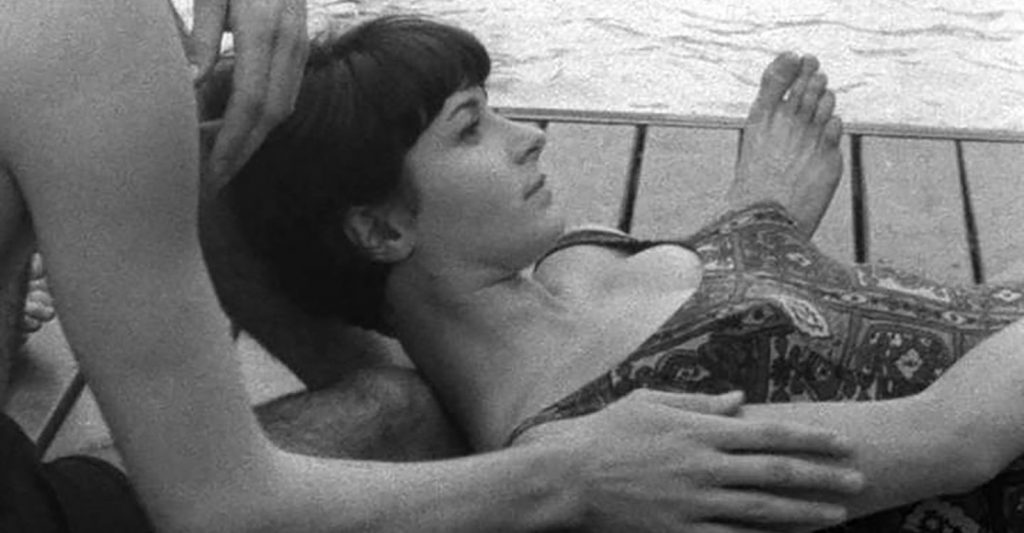
In 1962, film journalist turned filmmaker, Eric Rohmer, completed his second film inspired by F.W. Murnau’s Sunrise (1927), Suzanne’s Career. Produced by Barbet Schroeder (already an established cinematic force in France), Suzanne’s Career adheres to the premise of all six of Rohmer’s “Moral Tale” films, charting the temptation of a married or “called-for” man by a female third party. Rohmer makes these films as much as an homage to Murnau as to analyze and dissect the contemporary social strata of France and its ramifications upon interpersonal relationships. What Rohmer proves with the very act of making so many films that address the same moral dilemma is that there are a multitude of probabilities and variations, with each change being designated to a variant motivational factor such as the characters, the year the story takes place, the wealth and age of the characters, physical location, etc.
What is uniquely significant about Suzanne’s Career is that it marks a departure for Eric Rohmer from the more rigid and meticulous style that defined his earlier films, particularly Le Signe Du Lion (1959). Suzanne’s Career does away with the standard concepts of coverage and static shots, embracing the cinema verite style of D.A. Pennebaker and Morris Engel in much the same way as Godard had done earlier with his film Breathless (1960). Part of Rohmer’s motivation for shooting Suzanne’s Career this way was to endow his film with a greater sense of realism and energy, but was also the by-product of a lack of sufficient funds. Due to monetary problems, Rohmer was forced to shoot a majority of Suzanne’s Career on the go, utilizing real locations with “real” people in the background in place of professional extras. But it is not the visual illusion to documentary filmmaking alone that makes this film an innovation in Rohmer’s filmography, but the manner in which he employs text and narration with an ear for literary voice and commentary. It’s as if Rohmer had discovered how to fuse the kinetic energy and visual possibilities with his background in journalism and writing. This fusion as I call it is the most important contribution Rohmer would make to the French New Wave.
Bertrand’s narration grounds the entirety of Suzanne’s Career in his perspective, so that all of the information one gleans from the narrative is in precise relation to Bertrand, transforming the film into a kind of character study. As Rohmer progressed as a filmmaker he retreated from narration tactics, preferring to utilize the visual component of film completely, not just as a point and counter point that composes the greater narrative of his films. Compare Suzanne’s Career to Love In The Afternoon (1972). In Love In The Afternoon Rohmer focuses every scene and almost every shot onto the male protagonist. This achieves the same strength of perspective as he achieved in Suzanne’s Career but without the use of narration. Of course, this change in narrative devices makes for a different cinematic experience, though not a thematic one. When viewing Love In The Afternoon, one journey’s with the protagonist through the film’s narrative, sharing experiences and perspectives. Suzanne’s Career is past tense, existing as a recollection by Bertrand that the audience experiences as his memory of the film’s narrative.
All of Rohmer’s literary concerns that come to the forefront of the viewing experience of Suzanne’s Career were actually quite out of vogue at the time of the film’s production. Alain Resnais and Alain Robbe-Grillet had revolutionized both the novel and the medium of film with their work Last Year At Marienbad (1961) and For A New Novel (1963). Drawing upon the philosophical writings of Henri Bergson, both Resnais and Robbe-Grillet intended to realign and deconstruct narrative construction and the cinematographic langue. In exact contrast to the work of Resnais and Robbe-Grillet is Eric Rohmer’s Suzanne’s Career. Rohmer advocates as well as embraces the literary traditions he employs in Suzanne’s Career. That Rohmer would make four more films that follow the same basic narrative premise as Suzanne’s Career only reinforces Rohmer’s perspective that the novel as well as the narrative film has as much versatility and potential as ever.
